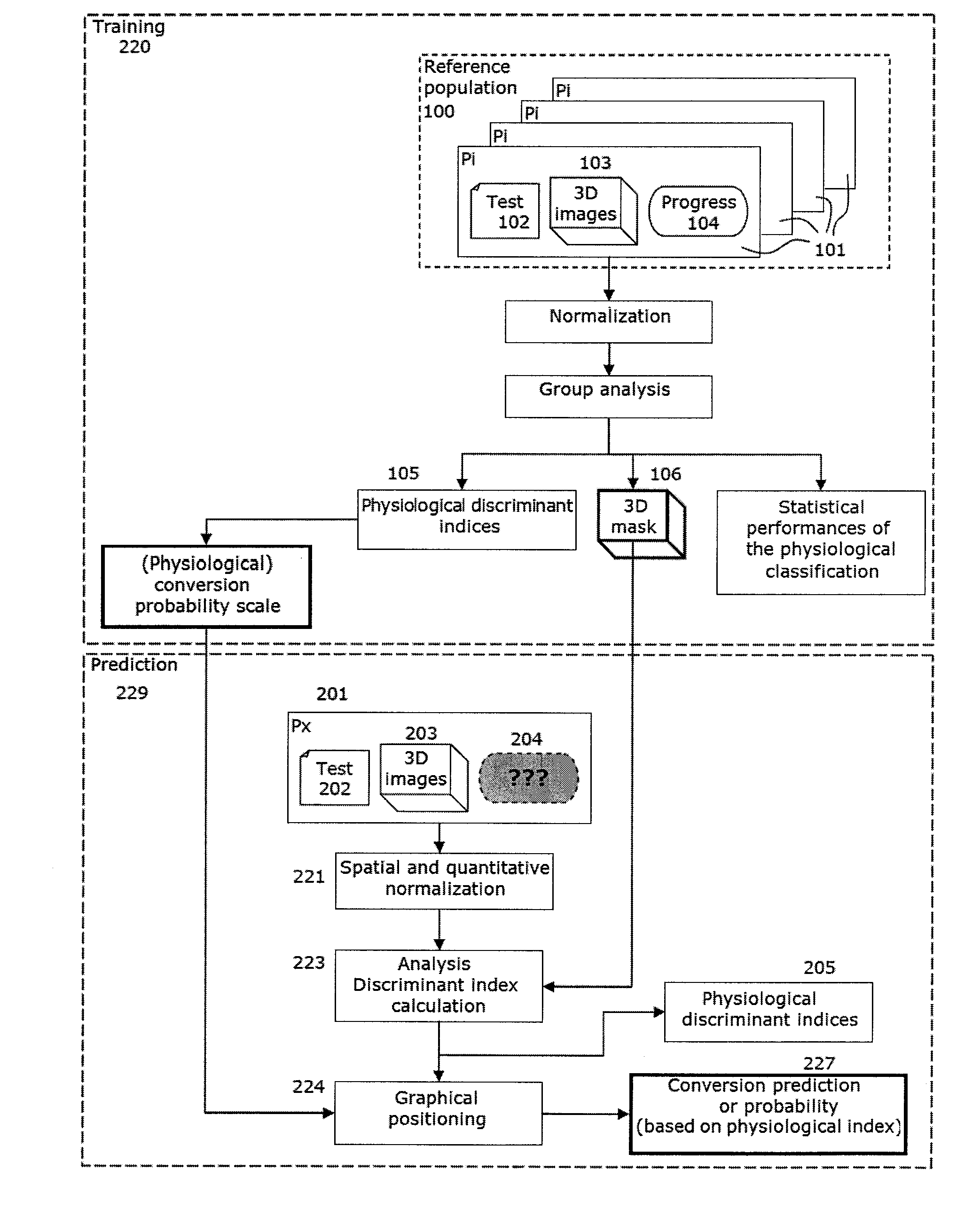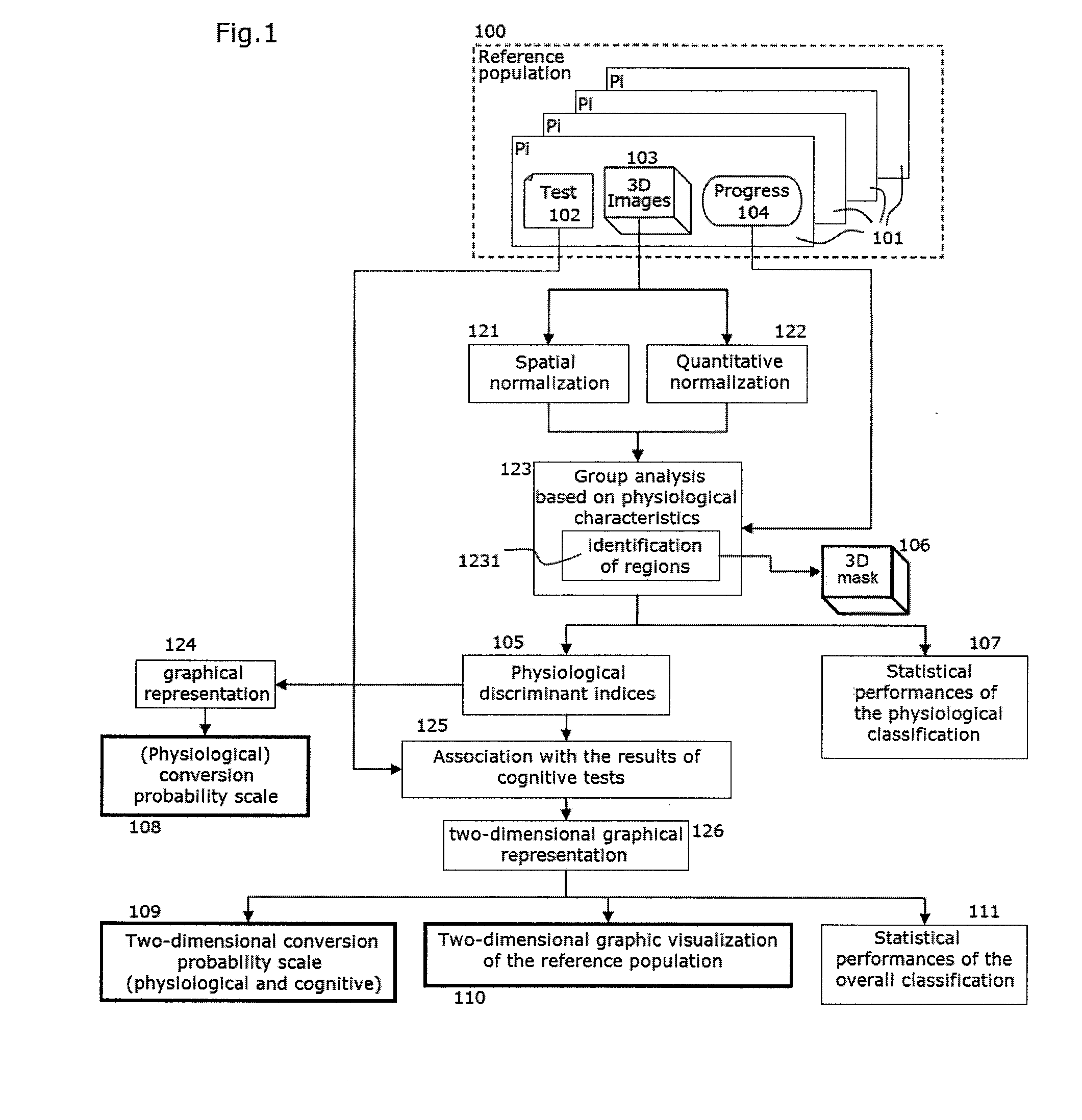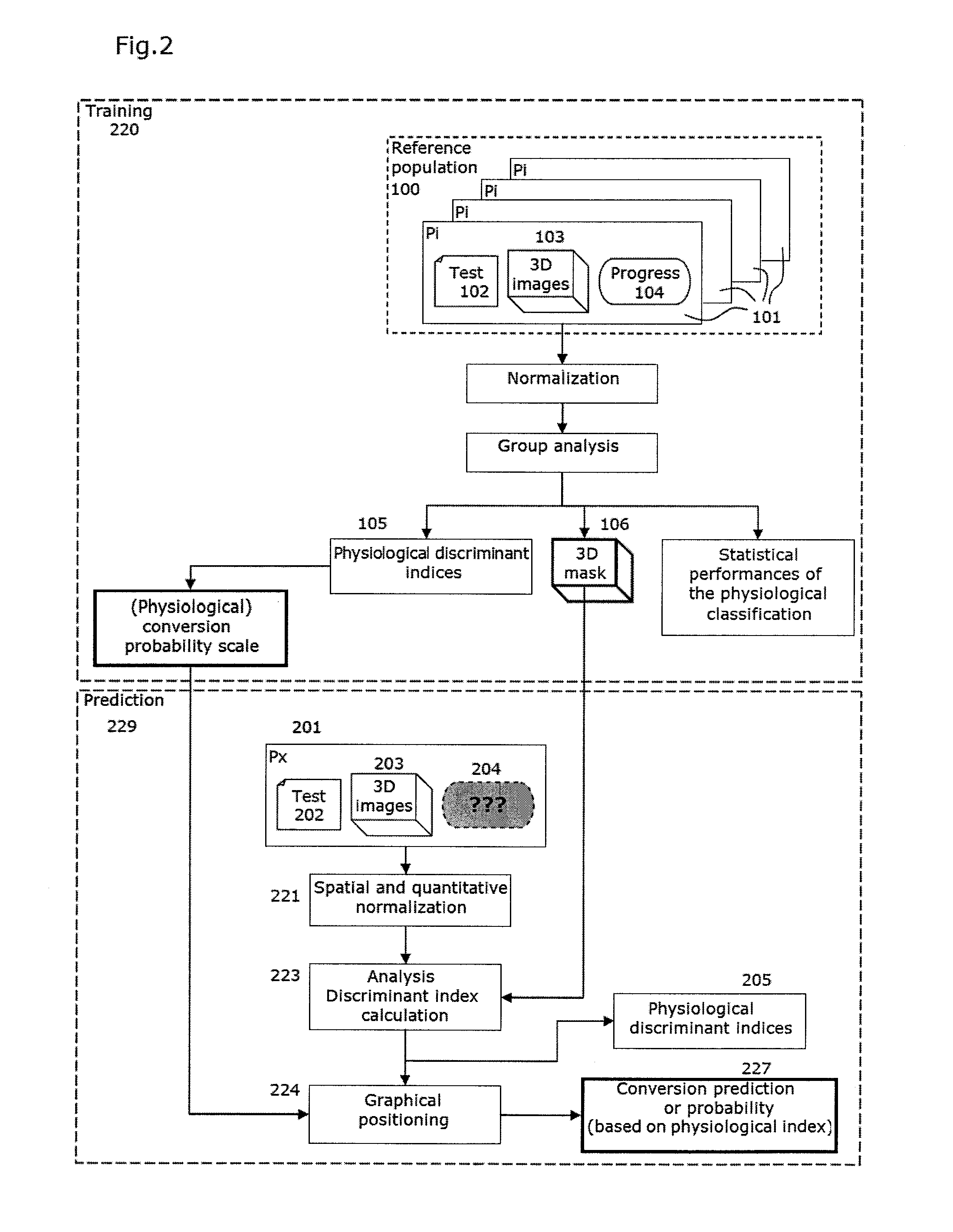Method and automated system for assisting in the prognosis of alzheimer's disease, and method for training such a system
a technology of alzheimer's disease and automatic system, which is applied in the field of method and automated system for assisting in the prognosis of alzheimer's disease, and the training of such a system, can solve the problems of less common in current practice, more complex pet imaging, and often considered less reliable spect imaging than pet imaging
- Summary
- Abstract
- Description
- Claims
- Application Information
AI Technical Summary
Benefits of technology
Problems solved by technology
Method used
Image
Examples
Embodiment Construction
fication, for example by deciding on a zone limit or a scale positioned on a graphical representation of this statistical classification. The system can then automatically provide a classification of the studied patient, in a specific delimited diagnosis or prognosis category within such a scale or graphical representation.
[0037]The choice of and the decision on the positioning of such a category limit thus constitutes a later stage in the development of the statistical classification and / or its graphical representation.
[0038]Within an overall method of diagnosis using the statistical classification provided by the invention, the deductive medical phase comprising the assignment of the results to a clinical presentation then corresponds to putting in place such a category limit and to the choice of its positioning in relation to the reference population.
SUMMARY OF A PREFERRED EMBODIMENT
[0039]More particularly, the invention proposes a preferred embodiment, originating from the inven...
PUM
 Login to View More
Login to View More Abstract
Description
Claims
Application Information
 Login to View More
Login to View More - R&D
- Intellectual Property
- Life Sciences
- Materials
- Tech Scout
- Unparalleled Data Quality
- Higher Quality Content
- 60% Fewer Hallucinations
Browse by: Latest US Patents, China's latest patents, Technical Efficacy Thesaurus, Application Domain, Technology Topic, Popular Technical Reports.
© 2025 PatSnap. All rights reserved.Legal|Privacy policy|Modern Slavery Act Transparency Statement|Sitemap|About US| Contact US: help@patsnap.com



